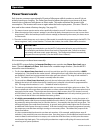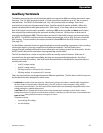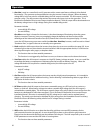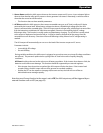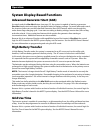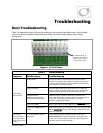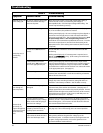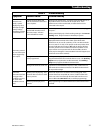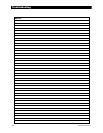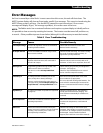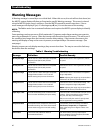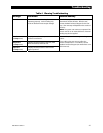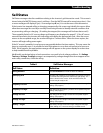
Troubleshooting
36 900-0020-01-00 Rev A
Table 2 Troubleshooting
Symptom Possible Cause Possible Remedy
Reduced power sold
to the utility grid.
AC source voltage is driven high
when the inverter sells large
amounts of power.
When the inverter senses a rise in grid voltage while selling, it
reduces the sell current, to avoid forcing the voltage to
unacceptable levels. Check AC input voltage while selling. The
inverter may be behaving correctly.
Erratic AC source voltage. Check AC voltage on the inverter’s input test points. (See page
33.) If not consistent, the problem is external.
MATE3 system display only: AC source voltage may have dipped or
hovered at a low enough point to crash a sensitive load before
the inverter could take over. This can happen if the inverter’s
Grid
AC Input Voltage Limits
or
Gen AC Input Voltage Limits
were
turned down to accommodate a problematic AC source. To make
the inverter respond sooner, raise the lower limit setting in the
appropriate menu. (If this setting was intentional, then no action
is required.)
Inverter set to
Search
(Search
mode).
The unit will take a moment to come out of Search mode after
transferring.
MATE3 system display only: If constant power is required, set to
ON
with the
INVERTER
hot key. (If this setting was intentional,
then no action is required.)
Loads sensitive to inverter’s
transfer time.
UPS
mode not in
use on the appropriate input.
MATE3 system display only: Most of the inverter’s input modes
feature an approximately 12 ms transfer time. Certain loads (such
as highly sensitive computers) may not respond well. The
UPS
input mode has a transfer time of less than 4 ms. Select this mode
for the appropriate input. (See page 12.)
Loads too large. The unit can transfer more power than it can invert. If loads are
oversized, the unit will falter or crash when switching to batteries.
Reduce the size of the loads.
Loads drop out or
crash during
transfer.
Undersized battery cables. Battery cables smaller than recommended will cause a significant
voltage drop when switching to batteries, acting like either an
overload or a low-battery condition. Size all cables correctly.
Unit reads AC input,
even though no
source is present.
Internal transfer relay may be
damaged.
Disconnect AC input wires and turn inverter on. Test the AC input
and neutral test points with an AC voltmeter. (See page 33.) If
voltage appears there, the transfer relay may be jammed. Contact
OutBack Technical Support (see inside front cover of this manual).
This problem is not common. If this occurs, it will likely occur on
only the Grid or Gen input — not both.
Inverter’s output has been
connected to its input. Voltage
shifts are the result of trying to
match its own voltage.
Disconnect the wires from the inverter’s AC input or AC output
terminals, or both. If the problem immediately disappears, it is an
external wiring issue. The inverter’s AC HOT IN and AC HOT OUT
must remain isolated from each other.
Low AC input voltage. Can be
caused by weak AC source, or
by faulty input connection.
Test AC hot and neutral input test points with an AC voltmeter.
(See page 33.) If low or fluctuating, this is an external problem.
Inverter clicks
repeatedly. AC
output voltage rises
or drops to unusual
levels with every
click.
A generator is connected to the
input terminals while the unit is
in the Grid Tied input mode.
The inverter is not intended to sell power to a generator. The
selling activity will drive the generator voltage up to the
disconnection point. It will then reconnect to the generator and
try again. Change input modes, or move the generator to an
input with a different mode selected.



